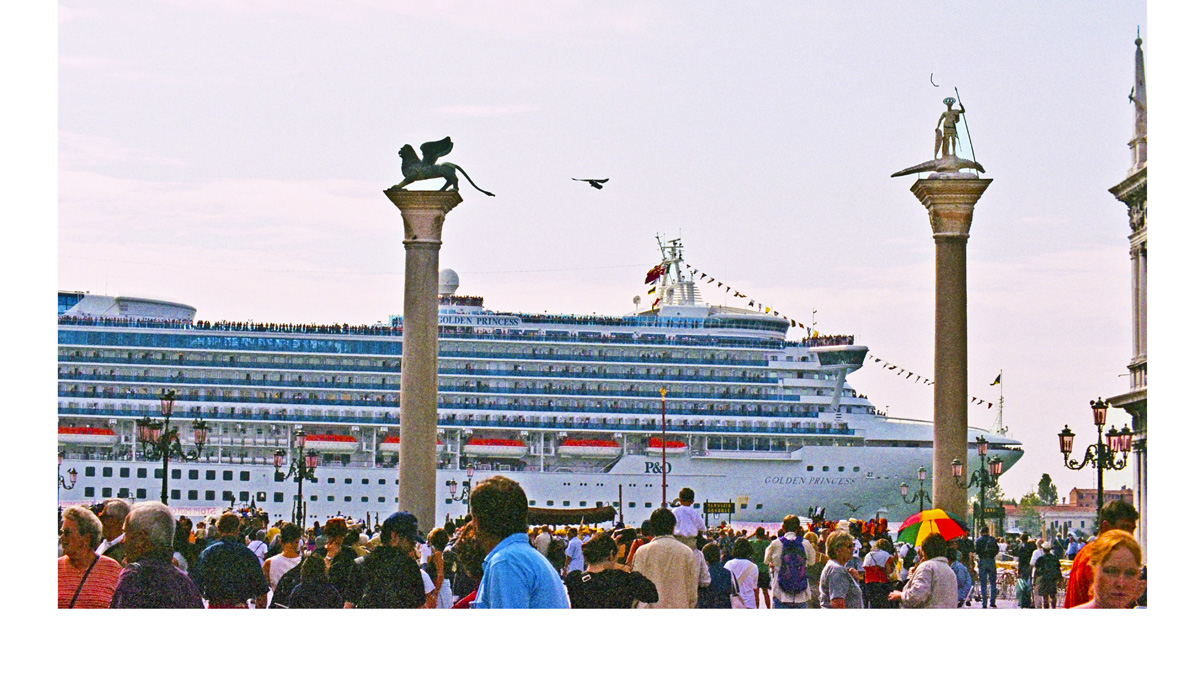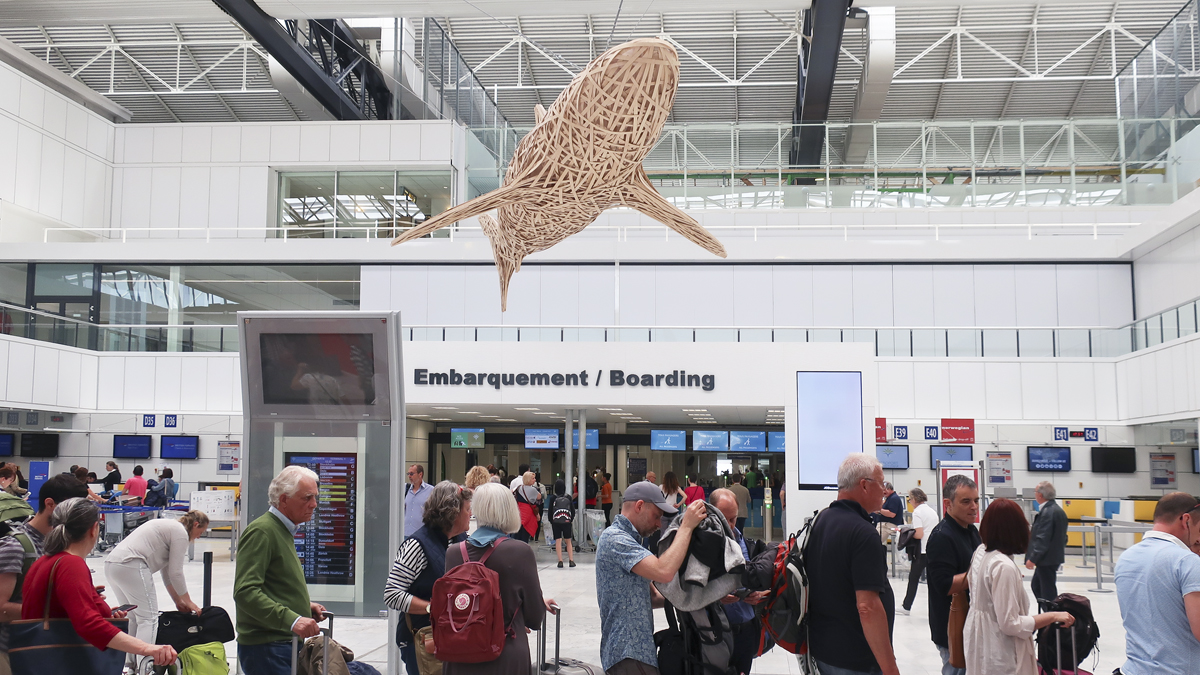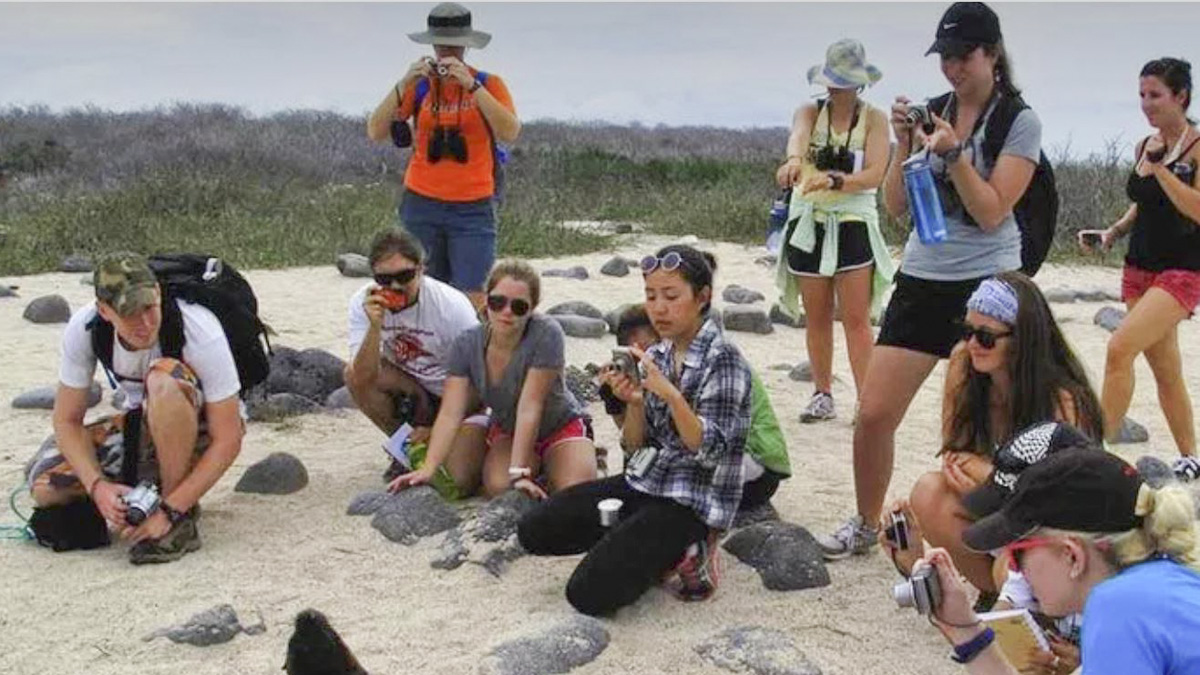
You, the night and a gondola. It’s a description of a popular evening excursion from cruise ships in Venice. And it certainly sounds appealing–until you realize that the blissfully romantic experience may actually be shared with another couple in a gondola that’s threading through a canal in a convoy of other gondolas.
Mass tourism is a reality not only in Venice, but in once-pristine locales around the world. You name it: sunrise at Taj Mahal, sunset at Angkor Wat, or even a climb of Mount Kilimanjaro will be less a memory of a personal dream realized and more a struggle to elbow through the crowd to get a good camera angle for a selfie.
Over-tourism has gone from a debate to a call for action at popular destinations around the world. At a recent cruise industry forum accepted part of the blame and are looking for solutions to keep tourism sustainable.
“What we’re talking about is more sustainable tourism, doing it in a better way,” said Richard Fain, chairman of Royal Caribbean Cruises Ltd. at the Seatrade convention in Florida. “It’s a question of where people go, how do you protect the environment, how to you bring people in a way that not only protects the environment, but also educates them.”
Cruise lines are working together to find solutions. Carnival Corp. president Arnold Donald said he recently met with the mayor of Dubrovnik on behalf of the cruise industry to discuss what lines can do to prevent the United Nations from stripping the city’s old center of its UNESCO World Heritage status because of over-tourism.

Donald reminded the conference — that included representatives from many cruise destinations — that it’s not necessarily cruise ships that bring so many people into popular destinations, but that the ships are the most visible target for concerns.
“Modern cruise ships resemble floating cities, and that brings challenges and responsibilities as well,” said Cindy D’Aoust, president of Cruise Line International Association. She noted that many cruise lines have already partnered with organizations such as the World Wildlife Fund and The Nature Conservancy “to promote the common interests we share in ocean conservation.”
Meanwhile, destinations that are feeling the summer (and spring and fall) tourist crunch are setting limits this year to ease the feeling that they’re being inundated.

Galápagos: The ecosystem is stretched to the breaking point
The latest alarm was raised by Ecuador, where the International Galápagos Tour Operators Association has called upon the government to limit land-based tourism growth in the Galápagos Islands and more carefully regulate the country’s tourism industry.
Ecuador’s government has placed a cap of 100 as the maximum number of passengers any ship can carry. There are no similar restrictions or regulations governing land-based tourism. The influx of tourists has risen to 245,000 per year and authorities caution that any more visitors and the islands face permanent harm to their ecosystems. “The environmental, social and biological features of this place – which is like no other – forces us to set a limit, to manage tourism in terms of supply, rather than demand,” said Walter Bustos, director of the Galápagos National Park.
Venice: Detours and fines for squeaky wheels
The on-again off-again effort to limit the size of cruise ships allowed to visit and to divert them to a pier further from the ancient city is continuing. In the interim, Venice mayor Luigi Brugnaro announced summer measures aimed at controlling visitor numbers—up to 120,000 tourists on busy days, which is twice the city’s permanent population of 55,000.
At peak times, access to popular sites such as the Rialto and San Marco will be rerouted from the main thoroughfares to prevent logjams. Automated people-counters are being installed on an experimental basis. Tourists who drive over the Ponta Della Liberta from the mainland could also be turned away if they have not pre-booked parking.
Controversial parts of the plan that are still being debated are fines of up to 500 Euros for noisy, wheeled suitcases being dragged through the historic centre, as well as fines for littering and loitering on bridges, swimming in canals, wearing swimwear while sightseeing and picnicking in public areas.
In the longer term, a limit on cruise ship arrivals and ban on docking of ships over 55,000 metric tons from St Mark’s Basin and the Giudecca Canal is still slated to come into effect in 2021.

Dubrovnik: It’s a Game of Thrones epidemic
A spike in the number of visitors–thanks to the popularity of the Game of Thrones—has brought so much crowding that UNESCO is threatening to take away its World Heritage status.
In 2016, 529 cruise ships called at Dubrovnik, bringing 799,916 passengers. That’s up from 475 ships in 2015 and 463 in 2014.The number of cruise passengers allowed to visit inside the walled city was capped at 8,000 a day in 2017 and the city’s mayor is aiming to cut that number to 4,000, although it hasn’t happened yet.
However, in a deal with cruise lines, ship visits and arrival times are being staggered through the week to more evenly space the crowds. The city has also reduced the number of souvenir stands allowed on streets within the walls by 80 per cent and cut the number of restaurant tables and chairs by 30 per cent, a move the mayor’s office said locals have welcomed to reduce overcrowding.
Thailand: The Beach is off limits
Thailand announced it is closing Maya Beach on Phi Phi Leh Island to tourists for at least three months in an effort to halt damage to the coral reef and sea life. The area became popular because it was the setting of The Beach starring Leonardo DiCaprio. Maya Beach receives an average of 200 boats and 4,000 visitors each day. Recent surveys by a team of marine biologists found large parts of the coral reefs around the area are gone.
Machu Picchu: Moving back from the heights
The Ministry of Culture in Peru is trying to cap the crowding on the trails to fabled Machu Picchu by dividing the number of tickets sold into two entry periods: the first one from 6 a.m. to noon and the second from noon to 5.30 p.m. and setting time limits. Tickets are no longer sold on site and tourists have to make reservations on a website in advance of their trip.
Since 2011, the average number of visitors at Machu Picchu has far exceeded the daily limit of 2,500 agreed to by Peru and UNESCO. All foreign visitors to Machu Picchu will also soon have to hire an official guide to enter the Inca Citadel, follow one of three predetermined routes through the complex and face time limits at specific points to keep the traffic flowing. Machu Picchu surpassed one million tourists for the first time ever in 2012, and last year hit nearly 1.2 million.





